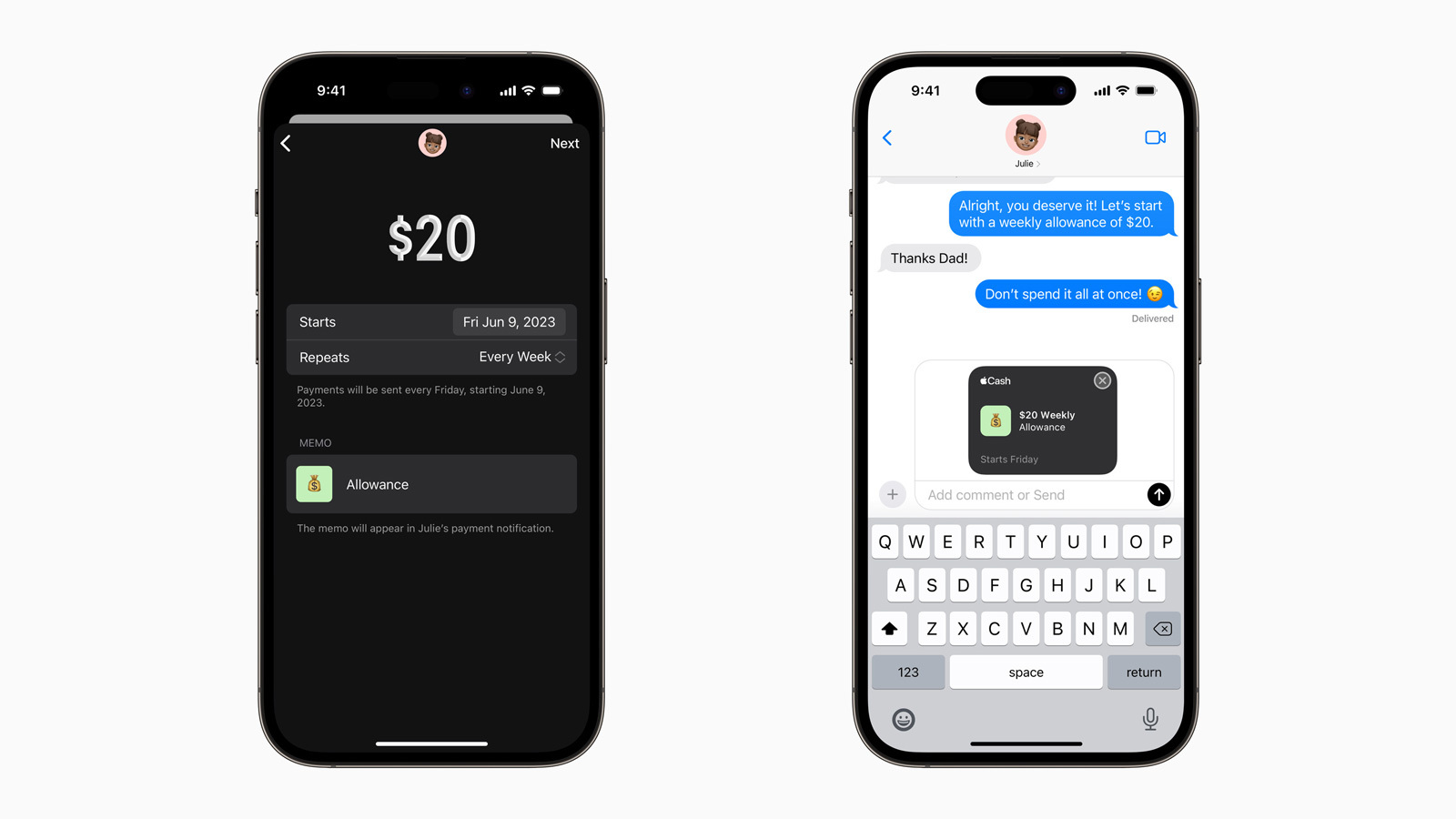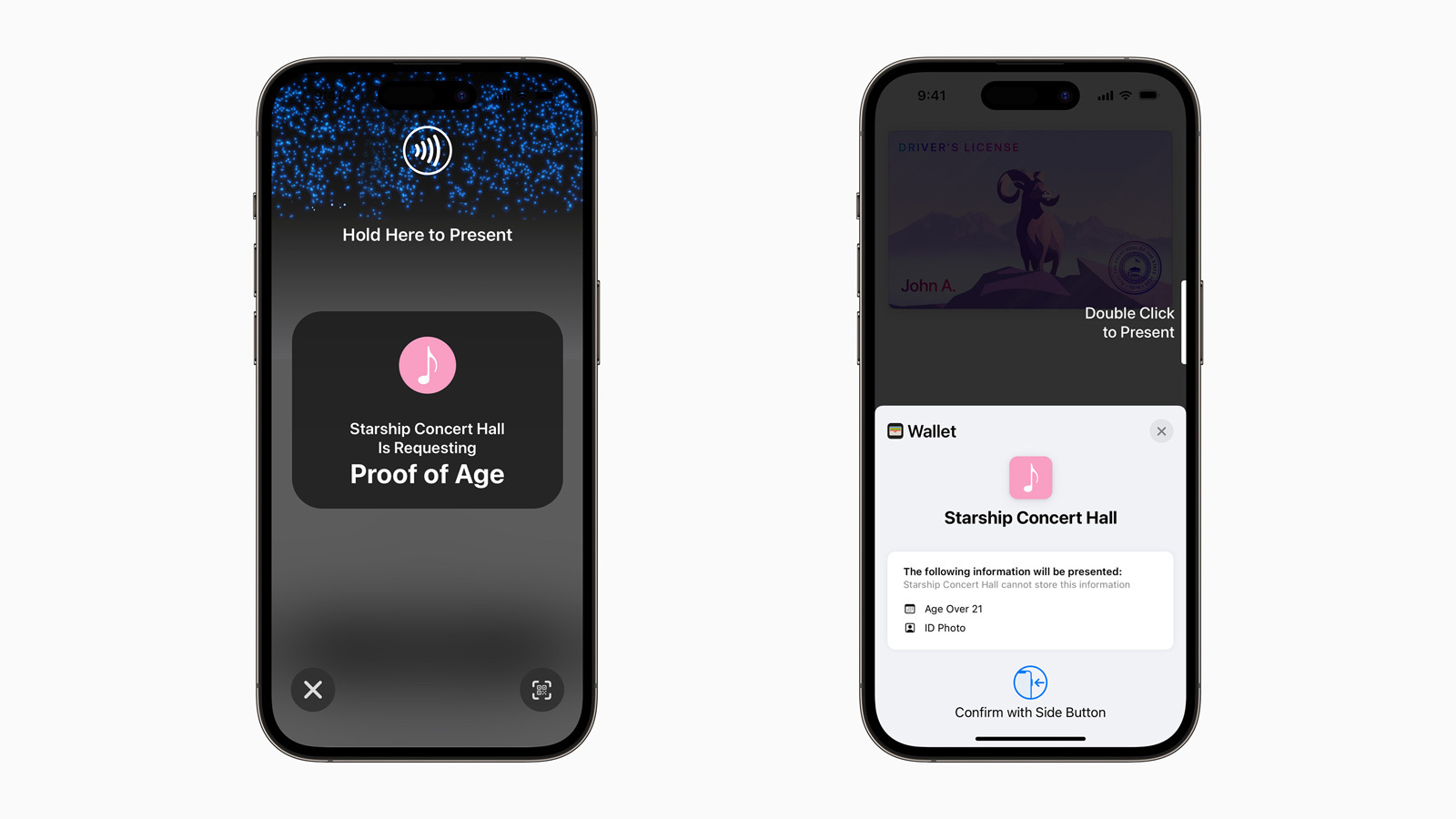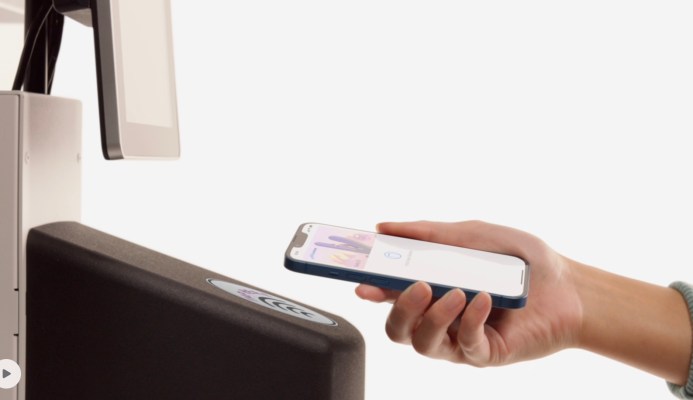Apple this morning announced two significant changes to Apple Wallet among a handful of other updates that didn’t make the keynote address on Monday, which kicked off the start of its Worldwide Developers Conference. With the launch of iOS 17 this fall, Apple says users will be able to set up recurring payments with Apple Cash — handy for regular expenses, like rent, or for parents paying kids’ allowances, for example. In addition, Apple is announcing a new system that will allow businesses to accept IDs stored in Apple Wallet.

Image Credits: Apple
The latter builds on Apple’s steady rollout of IDs in Apple Wallet across the U.S., where a number of states now support the ability to load a digital version of users’ government ID to their iPhones. Currently, IDs are supported in Arizona, Colorado, Georgia and Maryland. The company had previously said other states are in the works, including Hawaii, Mississippi, Ohio and the territory of Puerto Rico, in addition to those mentioned during its 2021 announcement, like Connecticut, Iowa, Kentucky, Oklahoma and Utah.
So far, there have been limited use cases for having a digital version of your ID in Apple Wallet, beyond the convenience, as they were largely only supported at select TSA checkpoints and lanes in participating airports.
Adding the ability for businesses to check users’ ages via digital IDs could boost adoption.
Apple explains that, with iOS 17, businesses will be able to accept IDs in Apple Wallet with no additional hardware required, which could streamline things like checking IDs for alcohol purchases or verifying an ID for car rentals, among other things. Bars and clubs with age requirements would also likely be interested in adopting the feature.

Image Credits: Apple
To work, iPhone users would simply hold their iPhone or Apple Watch near the business’s iPhone, where they’ll see what information is being requested and whether or not the receiving party will store the information. They’re then asked to authenticate and consent by using Face ID or Touch ID to share their information back with the business.
This sounds similar to how the TSA is working with IDs in Apple Wallet, where information is presented digitally through encrypted communication between the user’s iPhone or Apple Watch and the identity reader. The biometric authentication then verifies that only the person who added the ID to the device originally can view or present their ID in Wallet.
Apple confirms that with the new functionality, it’s following the ISO 18013-5 standard, which leverages near-field communication (NFC) in order to establish a secure Bluetooth connection between the user’s iPhone and Apple Watch, or a compliant third-party device and the identity reader. And because businesses may have varying needs around identity and age verification, it’s also rolling out two APIs for businesses, developers, and organizations to use for accepting IDs in Wallet.
One is a simple Display Only API that they’ll be able to use to access limited information like a portrait, full name, age or whether the person is over a certain age. As the name implies, they receive this minimal information on a display-only basis, which means they will be able to see it, but will not be allowed to store it. This also prevents them from being able to screenshot or record the information on their device.
The other API is the Data Transfer API, which the business will need to request and receive an entitlement from Apple to access — essentially, special permission. This API will allow them to receive and store other additional necessary identification information from a driver’s license or state ID, like driver’s license number or address. Apple notes the business or organization will only get the information necessary for their identity verification purpose, but they’re responsible for the storage and retention of any data received.
With the new Apple Cash updates, meanwhile, Apple says users will be able to set up weekly, biweekly or monthly Apple Cash payments to another recipient, and will be able to automatically top off their Apple Cash balance when it runs low.
The new functionality will become available with Apple’s software releases later this fall, including iOS 17 and watchOS 10. The company also shared a number of other new features across its suite of apps, like Apple Maps, Apple Music, Apple Podcasts, Apple News and more.

